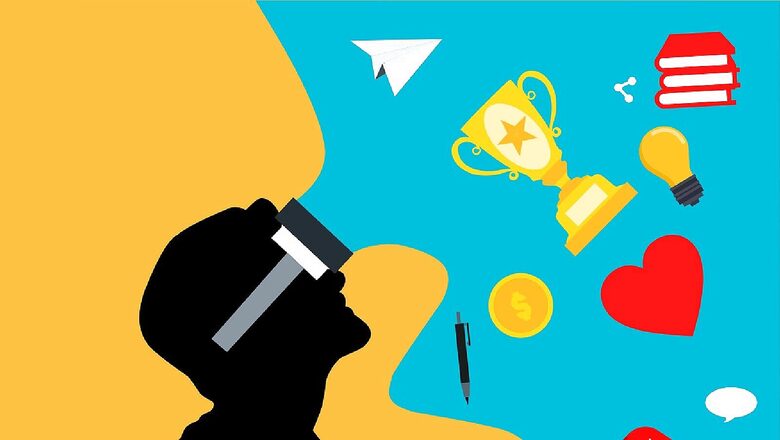
views
Metaverse: What is it? Virtual reality, augmented reality, immersive technologies, social media, and artificial intelligence make up the metaverse, a combination of several technologies. Metaverse is already ingrained in your mind if you have visited a virtual museum or played a virtual game.
By expanding the canvas of the internet through a combination of many new and developing technologies, Metaverse presents an opportunity like never before. In a country like India, this technology could be leveraged to rapidly expedite and upgrade our educational and skill developmental goals. Whether it’s universalizing STEM education in India, upskilling our blue-collar workforce for jobs of the future, teachers training or even strengthening our booming EdTech industry.
The Metaverse can address the issue of physical infrastructures in offering STEM education. It’s expensive to build science labs, planetariums, building museums in the real world and its regular maintenance becomes another challenging factor. Instead of buying expensive learning objects, it can be made available in the digital world for 1 per cent of the cost.
Also, Higher education can become more relevant if it can be hyper-personalized. One-on-one learning is possible using AI and the metaverse. With the growing ecosystem of digital spaces, networks, and metaverses, our daily activities and interactions in the physical, as well as virtual worlds, will have even more impact on us.
This already has implications for higher education because it extends the ways in which students can access information, how the information will be created, and how students will interact and connect. Workplace experiences, virtual internships, and connecting them with the higher education curriculum are possible on the Metaverse.
Technology will make it possible for teachers to become more intuitive and to use tools to create a more conducive learning environment. For both teachers and students, immersive technology and Metaverse will be impactful. In the same way, this technology can also address the challenge of teachers’ training and upskilling of workforce. It can compensate for the lack of infrastructure, which was so far not available to upskill the workforce.
The metaverse combined with artificial intelligence ( AI) and Data science can also measure the skill of a trainee over a period of time. It can assess and predict the employability of the learner —how fast the learner is picking up the skill and how good he/she will be at the real job.
It can also gamify the entire process of skilling which will increase engagement and makes training fun. With immersive technologies, a person can visit a manufacturing unit and attain the required skill without visiting the industry physically. He/she can have immersive training that can closely simulate the job environment and can offer the hands-on experience needed to perform tasks.
More than specific achievements, the biggest change that Metaverse could help usher in is the era of creators in our economy. Many economists and experts have spoken before about the challenges of India’s labor-centered workforce when battling with global economies of scale. By empowering students and workers through immersive technologies, Metaverse can shift our workforce towards a creator and producer orientation.
Another reason that the Indian economy seems so appetizing is probably that we are achieving our demographic dividend in the next 20 years. This means that from now till 2040, India’s working population is going to start outnumbering those who are dependent – providing an interesting moment to achieve many economic and social gains. The important question is: How are we currently educating this crucial future workforce?
In the context of this demographic dividend, it becomes important for us to see how Metaverse can solve systemic challenges and infrastructural problems that are rooted in the country’s urban and rural divide. By providing a solution that requires lean implementation and minimal resources, Metaverse offers an opportunity to scale our initiatives right to India’s rural hinterlands.
Even if it is just a simple integration with existing Whatsapp technology, many companies can work in the Metaverse to create programs and bots that help workers from tier 2-3 cities and even rural India pick up digital skills and train them without high onboarding costs.
Instead of building expensive labs and classrooms, edtech companies can design modules that leverage AR and VR to give every student with a phone an immersive experience.
As the world enters another exciting phase of technological development, let us focus on making technology the solution and not another factor that divides and excludes those who are already marginalized. Let’s make Metaverse the bridge between our urban and rural populations.
— Written by Manav Subodh, Co-Founder of 1M1B (One Million for One Billion) Foundation
Read all the Latest Education News and Breaking News here



















Comments
0 comment